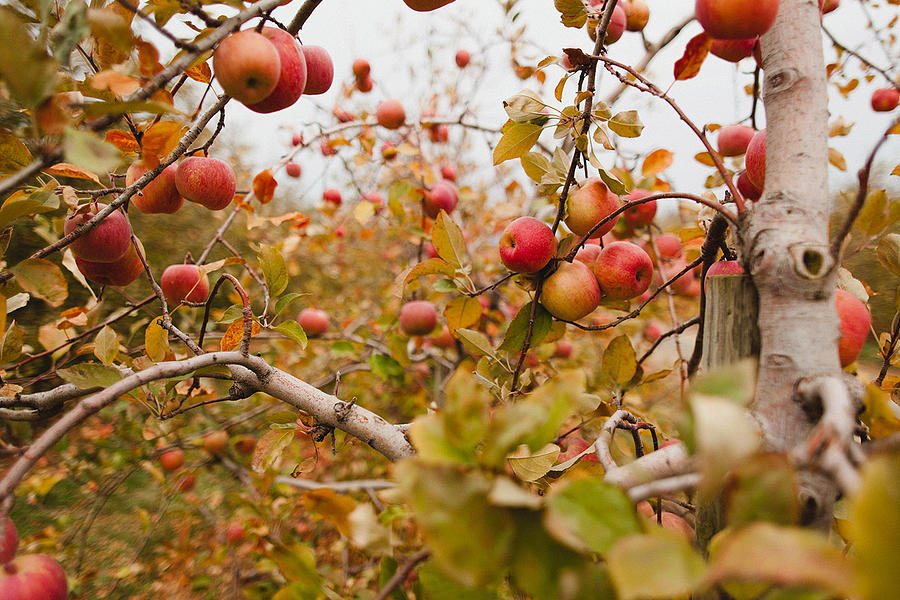
Introduction
The arrival of fall brings with it a symphony of colors, a chill in the air, and an unmistakable sense of change. It’s a time when nature makes its preparations for the colder months ahead. For many trees, particularly fruit-bearing ones, autumn is a season of giving, a time when they offer up their precious harvest to eager hands. But what happens to your trees if you don’t participate in this seasonal ritual of gathering fall’s bounty? The consequences of neglecting fall harvests are more significant than you might think, affecting not only the tree itself but also the environment, your future harvests, and even your own culinary experiences. In this blog post, we’ll explore these repercussions and delve into why it’s crucial to engage with the fall harvest.
1. Lost Yield and Waste
Perhaps the most immediate and obvious consequence of not harvesting your trees during fall is the loss of a valuable yield. For fruit-bearing trees like apple, pear, or cherry trees, this means the fruits are left to their own devices, whether to rot on the branches, drop to the ground, or become a feast for local wildlife. This waste not only impacts your personal food supply but also contributes to the larger problem of food wastage, which is a significant global concern. Food waste not only strains the environment but also means a loss of resources, effort, and potential for sustainability.
2. Decline in Tree Health
When fruits are left on the tree beyond their prime harvest time, the tree diverts energy to maintain them. This energy expenditure can lead to a decline in the overall health of the tree. Weaker trees are more susceptible to diseases, pests, and the rigors of harsh winter conditions. In the long run, neglecting the harvest can result in trees that struggle to thrive in the coming seasons, impacting the quality and quantity of future yields. It’s a cycle that perpetuates itself and can be challenging to reverse.
3. Dissuading Future Growth
Beyond the immediate health of the tree, not harvesting in fall can send signals to the tree that its fruits are not being consumed or are unwanted. In response, the tree might reduce its future fruit production. This natural survival mechanism could have long-term implications on your tree’s productivity. Consistent harvesting, on the other hand, encourages the tree to continue bearing fruit, helping to ensure a steady supply of delicious, homegrown produce in the years to come.
4. Attracting Pests
Overripe and fallen fruit, left unchecked, can attract a range of pests and insects. This includes rodents, wasps, and other creatures that see the bountiful buffet on your property as an irresistible invitation. These unwanted guests not only disrupt the local ecosystem but can also infest your garden or nearby areas, potentially causing damage to other plants and introducing nuisances that can be challenging to manage.
5. Environmental Impact
Abandoning a fall harvest isn’t just a loss for your personal ecosystem; it also has wider environmental implications. Wasted food, whether it’s in the form of rotting fruit on your tree or discarded produce in your home, contributes to greenhouse gas emissions when it decomposes in landfills. These emissions are harmful to the environment, contributing to climate change and exacerbating existing environmental challenges. Additionally, the resources used in growing those fruits – such as water, soil nutrients, and energy – are wasted when the harvest isn’t realized. These resources could be better allocated to other uses or conserved for a more sustainable future.
6. Missed Culinary Delights
Lastly, but certainly not least, skipping the fall harvest means missing out on the culinary delights that come with it. Homegrown fruits and nuts are at their peak flavor and nutritional value during the fall harvest. The crisp, sweet apples, the juicy pears, the vibrant pumpkins – these are the treasures of the season, and by neglecting to harvest them, you’re depriving yourself of fresh, natural snacks, preserves, pies, and a host of other delectable treats. The flavors and textures of these homegrown delights are unparalleled, and indulging in them is a hallmark of the fall season.
Conclusion
The fall harvest isn’t merely a tradition or a nostalgic exercise; it’s a vital practice for maintaining tree health, preserving food resources, respecting the environment, securing future harvests, and enjoying culinary treasures. By neglecting the fall harvest, you’re turning your back on a wealth of potential benefits, from your tree’s well-being to the delicious flavors you could experience. So, as the leaves change and the air turns crisp, don’t forget to embrace the age-old practice of fall harvesting. Your trees, your garden, the environment, and your taste buds will undoubtedly thank you, and you’ll be reaping the rewards of a season well-celebrated.


